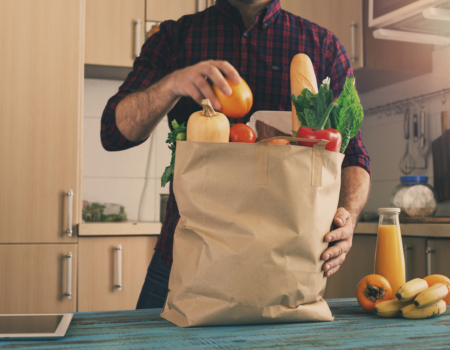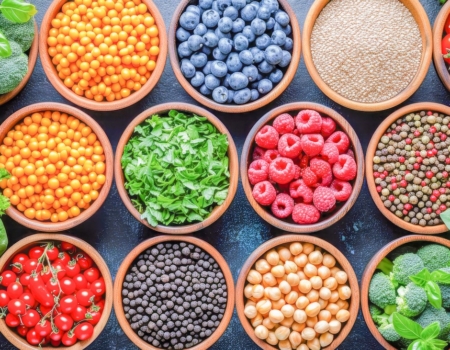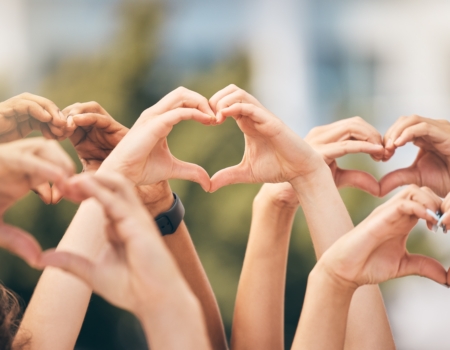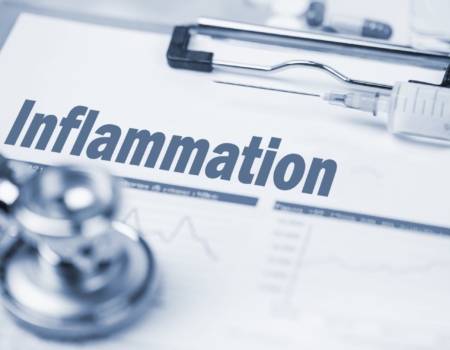Let’s take a road trip through your digestive system

Many of us know the basics of our digestive system, such as the stomach and intestines. But do you know how all the sections fit together, their purpose, and the role of assisting organs, hormones, and secretions? To understand our bodies better, let’s take an educational road trip through the digestive system with some interesting stops along the way!
Stop #1: Mouth, Senses, and Esophagus
We have all experienced our mouths watering when we see, smell, taste, or touch our favorite foods. This “mouthwatering” or saliva secretions are the beginning of the chemical digestion of the food we are about to eat. As we eat, our taste buds signal pleasure and satisfaction to our brain while our mouth, teeth, tongue, and saliva continue to break down food mechanically and chemically. Our food needs to be a reasonable size and consistency to move down the esophagus into the stomach using muscle contractions known as peristalsis. Interesting fact, this food glob is called a Bolus. The movement of the bolus is known as motility. Good motility of food through the gastrointestinal tract is important for good health.
Stop #2: The Stomach
Further chemical and mechanical digestion takes place in the stomach. Interesting fact, when empty, the stomach can only hold about 50mL, but when full, it can hold more than 1,000mL! The stomach’s ability to stretch comes from the gastric folds, and the stomach can mix or churn together your food and gastric juices (hydrochloric acid, pepsinogen, and pepsin). The gastric juices begin the breakdown of proteins into amino acids and fats into fatty acids. But our favorite macronutrients are not absorbed into our bodies in the stomach, in fact, absorption in the stomach is limited to a small amount of water, some minerals and medications such as Aspirin, and alcohol. Alcohol can be absorbed in the mucous layer of the stomach and immediately enter the bloodstream. Lastly, the stomach acts as a storage unit while our food is slowly – one teaspoon at a time – moved into the small intestine through a small opening called the pyloric sphincter.
Stop #3: The Small Intestine, Liver, Pancreas, and Gallbladder
Food that has left the stomach and entered the small intestine is called chyme. Chyme is again mixed with other intestinal secretions to further the breakdown of nutrients. Most of our body’s nutrient absorption happens within the three sections of the small intestine (duodenum, jejunum, and ileum). Interesting fact, when stretched end to end the average small intestine measures about 16 feet! The inner surface of the small intestine is covered in little fingerlike projections called microvilli that offer a large surface area for most nutrients, vitamins, and minerals to cross over the mucus barrier into the bloodstream. Not all sections of the small intestine are created equal, the ileum or last section is interesting because it has specific receptor sites for vitamin B12 absorption and it also recycles bile, sending it back to the liver six to eight times per day.
The small intestine accepts help from supporting organs, mainly the pancreas and the gallbladder. These two organs secrete hormones, digestive enzymes, bicarbonate, and bile to help further digest and absorb nutrients. Pancreatic juices assist in breaking down protein, starchy carbohydrates, lipids or fats for absorption. In normal, healthy individuals most of what we eat is completely absorbed by the time chyme enters the large intestine.
Stop #4: The Large Intestine, Rectum
The main purpose of the large intestine is to reabsorb water, electrolytes, and a few vitamins. It contains four sections (ascending, transverse, descending, and sigmoid) and is connected to the rectum and anus. Within the large intestine you won’t find microvilli, but you will find thousands of bacteria that ferment fiber, resistant starch, and sugar alcohols. Interesting fact, excessive undigested food in the large intestine such as undigested carbohydrates may cause gas and flatulence. Many factors affect the type and number of bacteria in your large intestine or colon such as age, health status, composition of diet, stress (physical and psychological), exercise, geography, medication use, etc. Maintaining your gut biome is an important health practice to support full digestion and absorption and reduce intestinal issues, such as gas, diarrhea, and constipation.
The rectum acts in the formation and storage of feces before defecation. These feces contain undigested food such as insoluble fiber, bilirubin, and bacteria. Interestingly, it takes a long time for food to pass through the large intestine, anywhere from 12-72 hours. Motility or movement issues could lead to constipation as the feces remain within the fluid absorbing intestines for too long. Bulking fiber can help stimulate the muscle contractions in the intestines to move feces through and out in a timely manner.
Stop #5: Foods and Habits that aid in Digestion
Fruits and Vegetables
Lean proteins
Healthy Fats
Fiber
Pre/Probiotics
Water
Exercise
Final Stop: Takeaway
There is a common belief that food is digested when it leaves the stomach. This is simply not true! Food is not digested until it is excreted from the body. Knowing the road your food travels can help you make healthy choices when facing cravings, ordering dinners out, or going to social events. Let’s make every meal count as we focus on your health goals!




